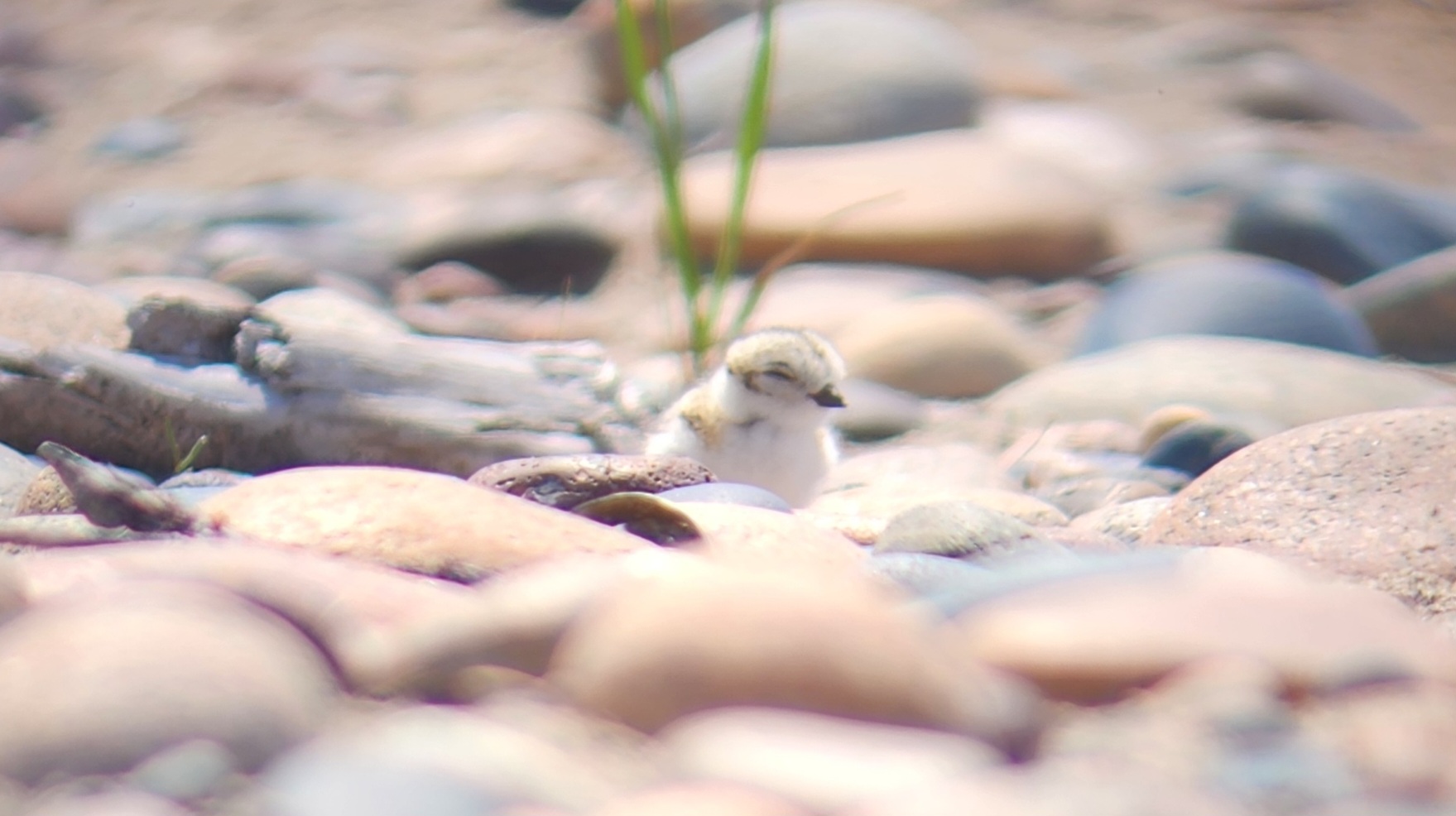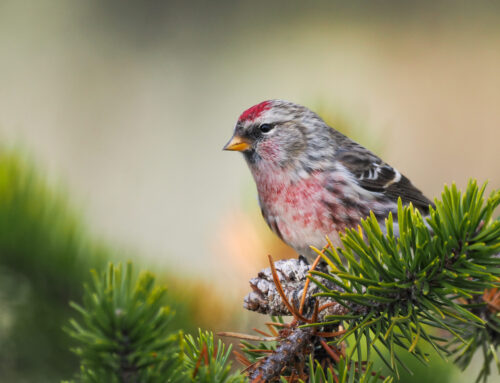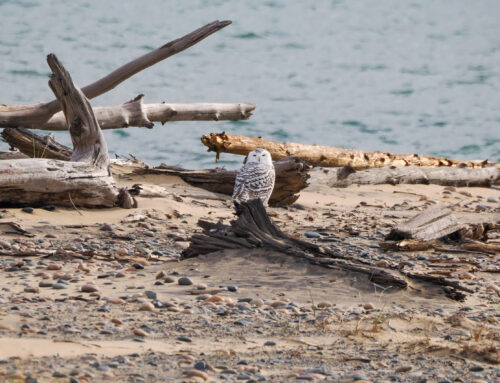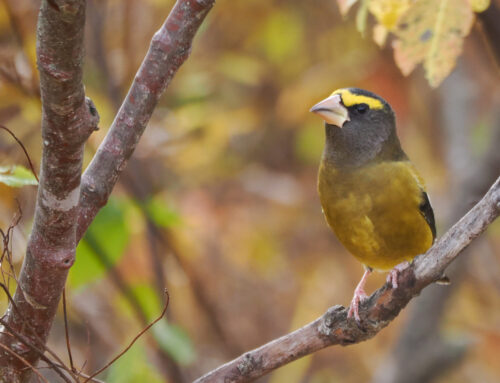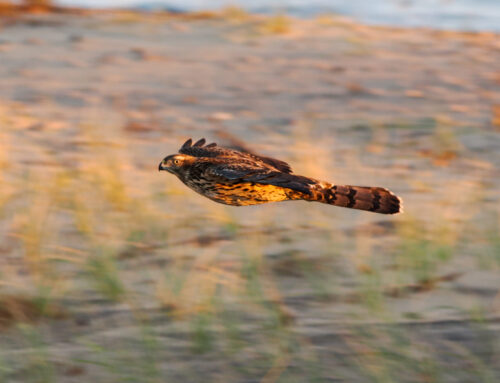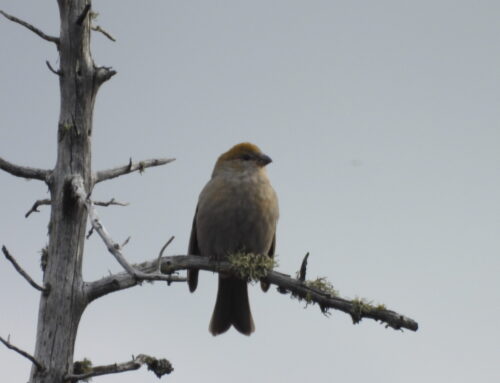Whitefish Point
One-two-three-four little plover chicks walking across the shore! Little Bill Bob and Vie’s nest hatched Saturday June 21 with four healthy chicks. I spent that morning sitting in the rain with Rusty and Gladys at Vermilion. When I arrived at the Point to see Bob hovering over the nest with feathers ruffled, I knew the chicks were coming. Sure enough, after a few minutes I saw little legs moving beneath him. A few seconds later a tiny chick emerged. I watched mesmerized, as the sprout slowly began exploring its world. It would take tiny steps, shuffling across the sand, not traveling too far from the nest. After a little bit the chick would return to Bob, snuggling under his feathers. Once Vie came and traded shifts I discerned there were two more chicks that had hatched, laying in the scrape. The eggs hatch asynchronously, and each chick was at a different stage of acclimating.
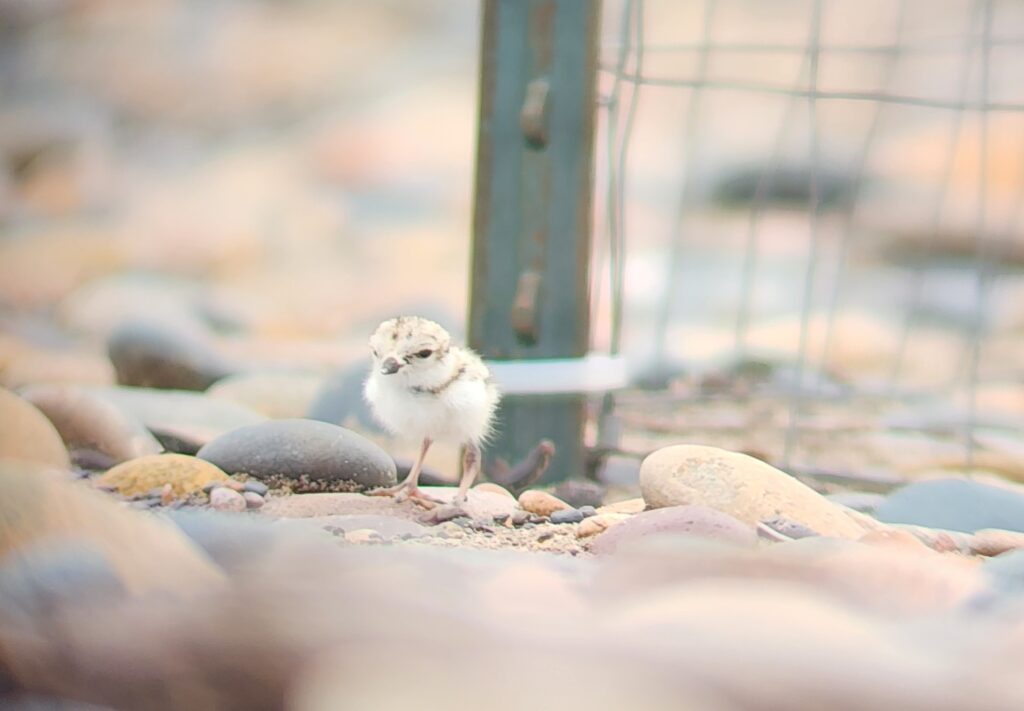
A freshly hatched PIPL chick traverses the shore. Photo by Stephanie Owens
I was standing at the water viewing the family and decided to change positioning on the beach to give them more room. When I reached a new spot just West of them, I peered through my spotting scope and discovered a surprise. A Painted Turtle was at the edge of the exclosure, stymied enroute by the obstruction. For half a second I was shocked, was this turtle trying to find a meal? I wasn’t about to stand around and find out. I quickly paced towards the nest, giving it a wide birth while watching every step. The parents were scurrying around in panic at the both of us, as I bent down and picked up the turtle by its shell. I swiftly exited the area, and once back at my scope watched as the parents returned to their young. I then took my reptilian friend and released him in a marsh by the Museum.
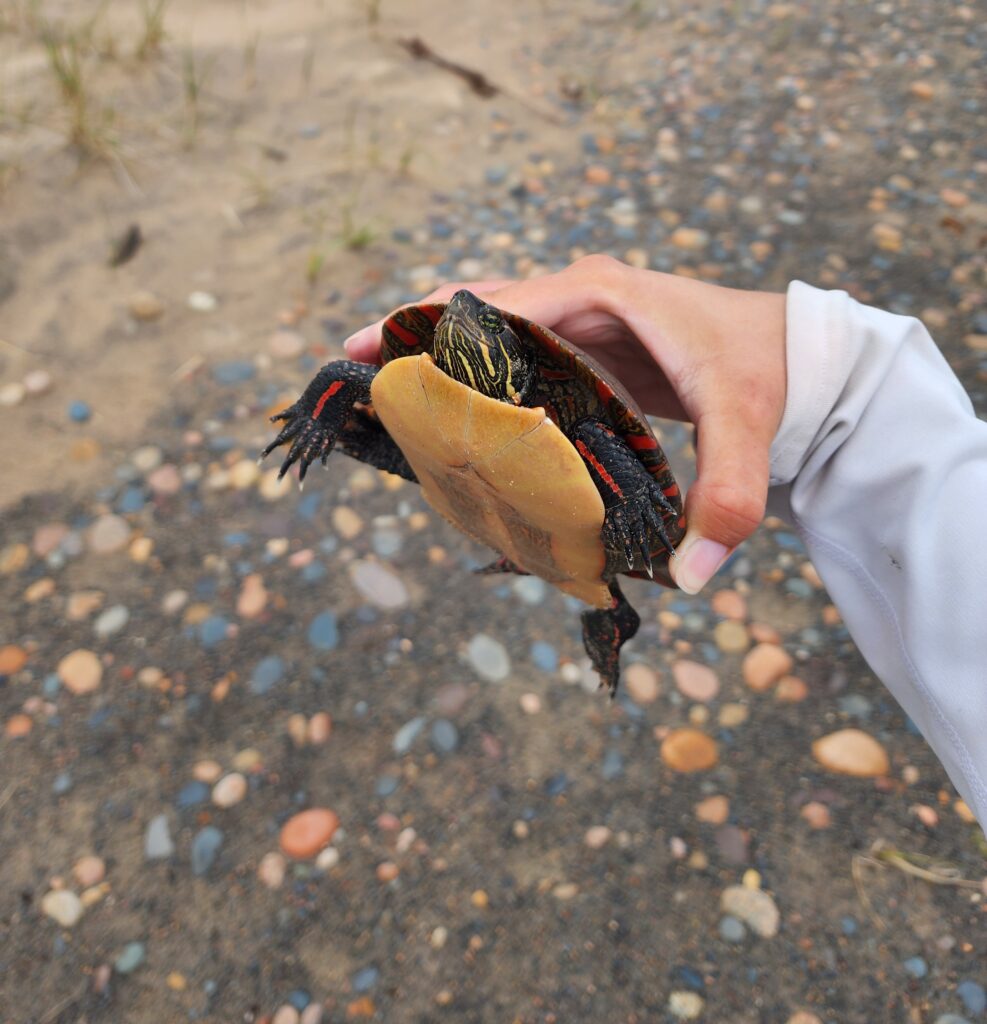
A Painted Turtle that visited the WFP Nest. Photo by Stephanie Owens
I was later informed by Piping Plover Expert Francie Cuthbert that they’ve never had issues with turtles before. We both concluded that this particular one was probably just trying to make its way across the beach, accidentally intruding on the plover family.
The next day I was delighted to find four chicks stumbling across the shore. Everyone was getting familiar with the new sensation of walking, occasionally tumbling over but recovering with stride.
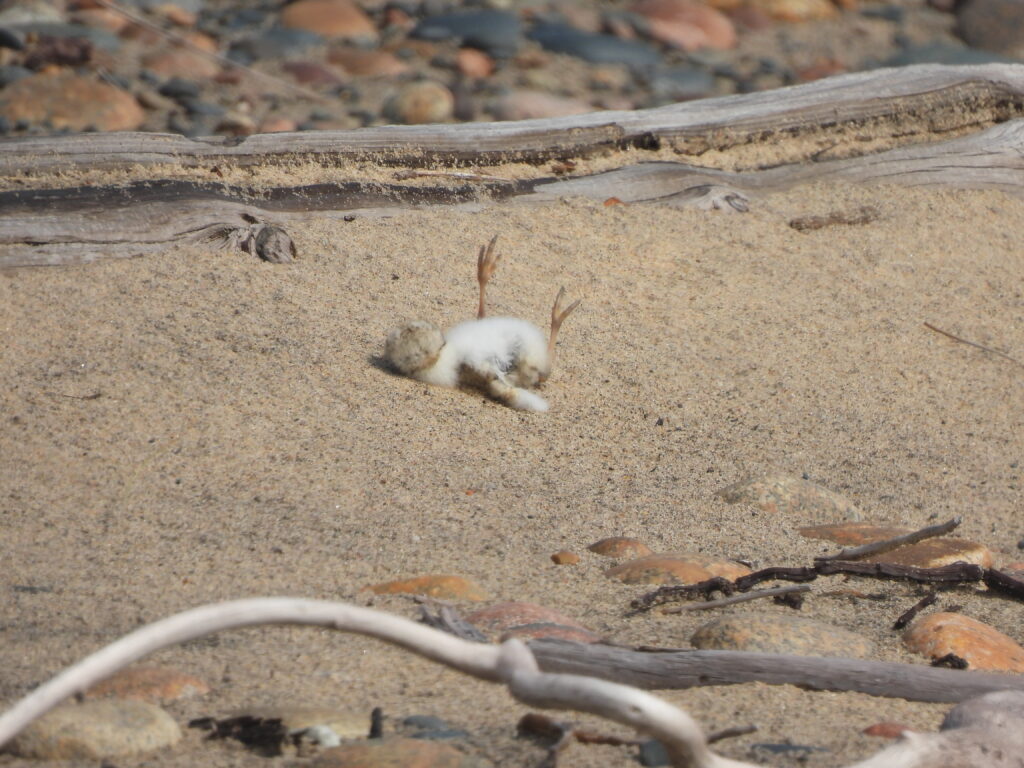
A few days old PIPL chick stumbles (he gets back up). Photo by Polly Sheppard
I find these early days so tender, as Vie and Bob watch over their hatchlings with care. The family spends their days maneuvering across the beach, the parents calling, directing their young where to go. The chicks will clomp around all scattered, eventually rejoining together beneath the safety of a parent’s wings.
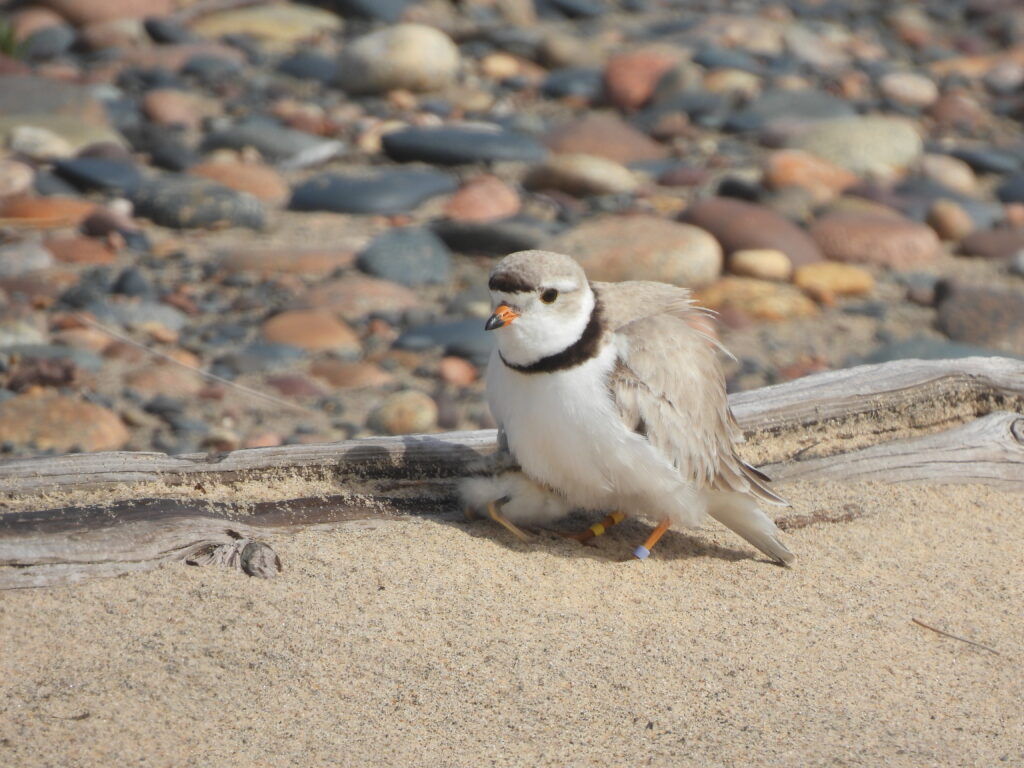
PIPL Vie shelters a chick beneath her wings. Photo by Polly Sheppard
Each day the chicks grow in strength and confidence, reaching new distances and obstacles. I look forward to watching their journey and reporting it back to you.
Vermilion Point
As for Gladys and Rusty, the wait is just a few more days. The pair continue incubating their three eggs with anticipation for the hatch date of June 28.
~ Stephanie Owens, 2025 Piping Plover Monitor
Featured Photo: PIPL chick sits peacefully in the sand | Stephanie Owens
Piping Plover monitoring is a collaborative effort between Michigan Audubon and Seney National Wildlife Refuge (USFWS).
You can keep up with the 2025 Piping Plover action at WPBO by reading Stephanie’s blog posts and following WPBO’s social media (Facebook, Instagram, and X).
Stephanie Owens: 2025 Piping Plover Monitor
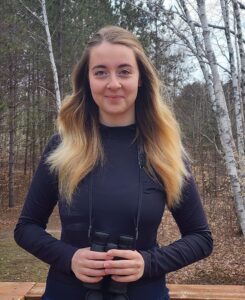 Having grown up in the Upper Peninsula of Michigan, an appreciation of the outdoors seemed inevitable for Stephanie. Walks in the woods with her father and high school science courses helped her identify this passion. In 2024, she earned a Bachelor of Science in Conservation Biology from Lake Superior State University, where she completed her senior thesis on the distribution of per- and polyfluoroalkyl substances in Eastern Upper Peninsula waterways. Now, with three seasons of PIPL monitoring under her belt, she looks forward to another summer with the U.P. plovers and returning to WPBO after a successful ’24 season. After the end of last season, Stephanie began her work at Eva Burrell Animal Shelter as a canine caretaker, fostering hope and love for all animals there.
Having grown up in the Upper Peninsula of Michigan, an appreciation of the outdoors seemed inevitable for Stephanie. Walks in the woods with her father and high school science courses helped her identify this passion. In 2024, she earned a Bachelor of Science in Conservation Biology from Lake Superior State University, where she completed her senior thesis on the distribution of per- and polyfluoroalkyl substances in Eastern Upper Peninsula waterways. Now, with three seasons of PIPL monitoring under her belt, she looks forward to another summer with the U.P. plovers and returning to WPBO after a successful ’24 season. After the end of last season, Stephanie began her work at Eva Burrell Animal Shelter as a canine caretaker, fostering hope and love for all animals there.

